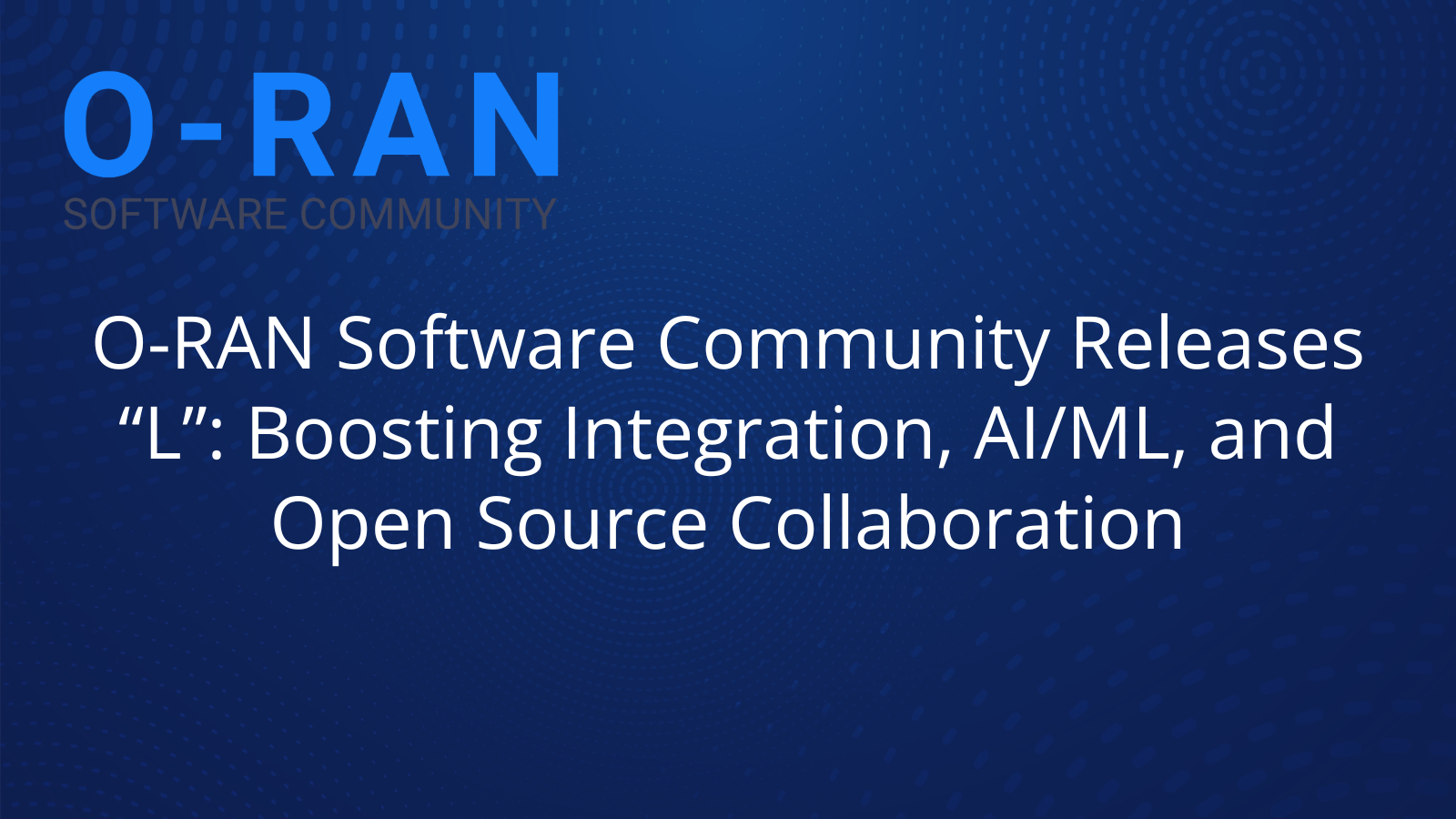
The O-RAN Software Community (O-RAN SC) is excited to announce the L Release, the latest update in our collaborative mission to deliver open, intelligent, and interoperable RAN software. Reflecting current and evolving alignment with O-RAN ALLIANCE specifications and developed through contributions from across the global open source ecosystem, this release introduces improvements in integration, automation, and AI/ML enablement across the stack.
Whether you’re a developer, network operator, academic researcher, or open source advocate, the L Release provides powerful building blocks to support testing, integration, and innovation across the Open RAN (O-RAN) ecosystem.
Why the L Release Matters
The L Release is a major milestone for the open RAN and open source communities. It highlights how cross-industry collaboration and transparent development practices can drive the evolution of modular, intelligent, and interoperable RAN technologies.
Key benefits of the L Release:
- Improved interoperability between O-RAN SC components
- Enhanced AI/ML capabilities with reusable pipeline elements
- Infrastructure upgrades for better deployment automation
- Improved alignment with the O-RAN ALLIANCE specifications
- Transparent documentation and open access to source code
What’s New in the L Release
The L Release delivers updates across four key areas:
- Integration: Achieved end-to-end integration with OAI Layer 1 and OAI-CU components and deployed a fully integrated deployment blueprint for orchestrating Non-RT RIC and SMO.
- Enhancement: Boosted the robustness of Service Manager and RANPM functions, improved the O2 DMS ETSi profile, advanced the modular AI/ML pipeline, upgraded to newer versions of Kubernetes and StarlingX, aligned YANG models with the November 2024 O-RAN specification train, and enhanced Topology Exposure & Inventory (TEIV) functionality.
- Optimization: Simplified operations by removing ONAP DMaaP from the OAM architecture.
- New: Released Python-based simulators for O-RU and O-DU supporting hybrid and hierarchical OAM architectures.
Non-Real-Time RIC (NONRTRIC)
- Improved integration with the Service Management and Orchestration (SMO) layer using a fully integrated deployment blueprint.
- Functional improvements to support integration and enhance the robustness of Service Manager and RANPM functions.
- Progress on cross-release epics including rApp management, CAPIF support, ONAP CL collaboration, Helm chart maintenance, and R1 service exposure.
AI/ML Framework (AIMLFW)
- Introduced a modular pipeline for AI/ML workflows with reusable components for feature extraction, model training, model storage, and model metrics storage.
- Enhanced the SDK to support data exchange between pipeline components and standalone operation without Kubernetes.
- Improved error handling and abstraction layers for broader model storage support.
Integration & Test (INT)
- Deployed a unified Kubernetes environment integrating AIMLFW, SMO, NONRTRIC, and OAM components.
- Standardized deployment scripts to make testing environments more replicable and accessible for community developers.
Infrastructure (INF)
- Aligned O-Cloud with StarlingX 10.0 and upgraded OKD O-Cloud to version 4.19.
- Added multi-node OKD O-Cloud support and improved automation and validation.
- Updated O2 implementation to comply with new specifications and support SMO integration.
RIC Applications (RICAPP)
- Maintained key open source xApps including KPIMON-Go, Bouncer, HW-Rust, and others.
- Supported RSAC use cases and laid the groundwork for new xApps focused on anomaly detection and E2SM CCC in future releases.
RIC Platform (RICPLT)
- Addressed bug fixes found during E2 testing and supported comparison testing between different RICs.
- Conflict Manager Phase 1 integration was postponed to the next release.
Operation and Maintenance (OAM)
- Simplified deployments by removing ONAP DMaaP.
- Integrated fail-based PM functionality and improved image security to reduce CVEs.
- Added Grafana into the Keycloak-based user management system and enhanced status visibility in topology.
O-DU High
- Achieved end-to-end integration with OAI L1 and OAI-CU.
- Completed ASN.1 encoder/decoder updates and merged changes into the main branch.
- Continued validation with SIB1 parameter testing at the NTUST lab; MSG2 interactions ongoing with known issues under resolution.
O-DU Low
- Focused on improving the O2 DMS ETSi profile to enhance interface compatibility.
Simulators (SIM)
- Released new Python-based simulators for O-RU and O-DU with support for hybrid and hierarchical OAM architecture.
- Updated YANG models to align with the November 2024 O-RAN specification train.
Service Management and Orchestration (SMO)
- Enhanced Topology Exposure & Inventory (TEIV) functionality.
- Improved the O2 DMS ETSi profile and integrated NFO K8s profile support in collaboration with INF.
Documentation (DOC)
- Published comprehensive release documentation for all projects and components.
- Access full L Release documentation here: https://docs.o-ran-sc.org/en/latest
Get Involved
Whether you’re building next-generation mobile networks, developing new xApps or rApps, or researching AI in telecom, the O-RAN Software Community welcomes your involvement.
- Learn more at: www.o-ran-sc.org
- Explore source code: https://github.com/o-ran-sc
- Read full documentation: docs.o-ran-sc.org/en/latest
Stay tuned for what’s next in the M Release!